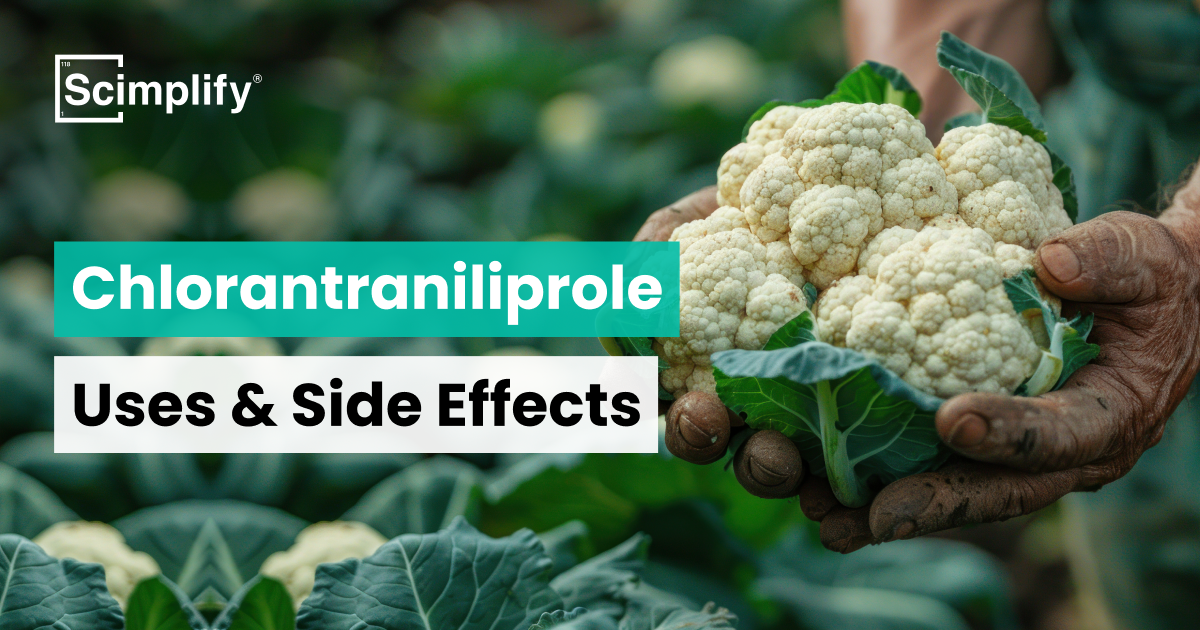Chlorantraniliprole - Uses and Side Effects
Discover the uses, benefits, and side effects of Chlorantraniliprole insecticide for crop protection. Learn how it ensures effective and safe pest control.

Chlorantraniliprole is a modern insecticide that is a member of the anthranilic diamide chemical family. It is also used extensively in the protection of crops against a wide range of Lepidopteran insects, including caterpillars, borers, armyworms, and fruit borers. The action of Chlorantraniliprole is chemical through the activation of the insect muscle ryanodine receptor that causes a persistent release of calcium ions, resulting in muscle paralysis, which eventually results in the death of the pests. This discriminatory mechanism of action provides a means of effective pest control in addition to minimizing effects on other desirable insects, mammals, and the environment.
Chlorantraniliprole is available in different formulations to suit a variety of agricultural applications, including Suspension Concentrates (SC), including 18.5% SC and 200 g/L SC, Water Dispersible Granules (WDG), granular formulations to use in turf, and microcapsules that are designed to be released gradually. These forms are flexible in use and in the suitability of crops, whether with foliar sprays, soil treatment, or with organic production.
Being a reliable supplier and distributor of Chlorantraniliprole, Scimplify is also a provider of quality products in bulk to satisfy the demands of agricultural and crop protection businesses worldwide.
Chlorantraniliprole Uses
Chlorantraniliprole can be used to protect a wide range of crops from lepidopteran and other chewing insect pests, including:
1.Rice
Controls stem borers and leaf folders that significantly reduce yield and crop quality.
2.Maize and Cotton
Effective against armyworms, bollworms, and caterpillars that damage foliage and fruiting structures.
3.Vegetables and Fruits
Protects crops like tomatoes, cucurbits, and apples from fruit borers and caterpillars through systemic action.
4.Ornamentals and Turf
Used in landscape and turf management to control cutworms and other chewing pests without harming beneficial species.
5.Specialty Crops
Applied on cruciferous vegetables (e.g., kale, cauliflower), sugarcane, and soybeans to target pests like the diamondback moth and sugarcane borers.
Get Premium Quality Chlorantraniliprole - Request a Sample!
Industries Where Chlorantraniliprole is Used
- Crop Farming (Rice, Cotton, Maize, Vegetables)
- Horticulture
- Turf and Ornamentals Management
Chlorantraniliprole Side Effects
Although chlorantraniliprole has a good safety profile and is targeted, there are some considerations:
1.Aquatic Invertebrate Toxicity.
Do not pollute water bodies, which may be disastrous to the aquatic ecology.
2.Low Mammalian Toxicity
When used in accordance with label directions, safe to humans and animals.
3.Possible Eye Irritation
The handling should be done with personal protective equipment (PPE) to prevent irritation.
4.Environmental Persistence
Persistent in moderately large amounts in soil, but should be applied according to recommended intervals to avoid accumulation.
Conclusion
The use of chlorantraniliprole as an integrated pest management system in several crops has been the choice due to the broad spectrum, new mode of action, and low environmental effects. The different formulations, such as 18.5% SC and 20% SC, allow growers to decide on the most suitable application procedures that will meet certain crop and pest requirements. In order to manage pests effectively and sustainably, one needs to purchase good-quality Chlorantraniliprole products and follow the directions written on the label.


